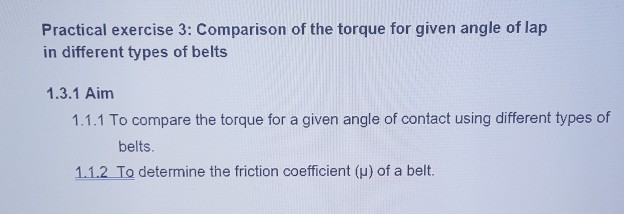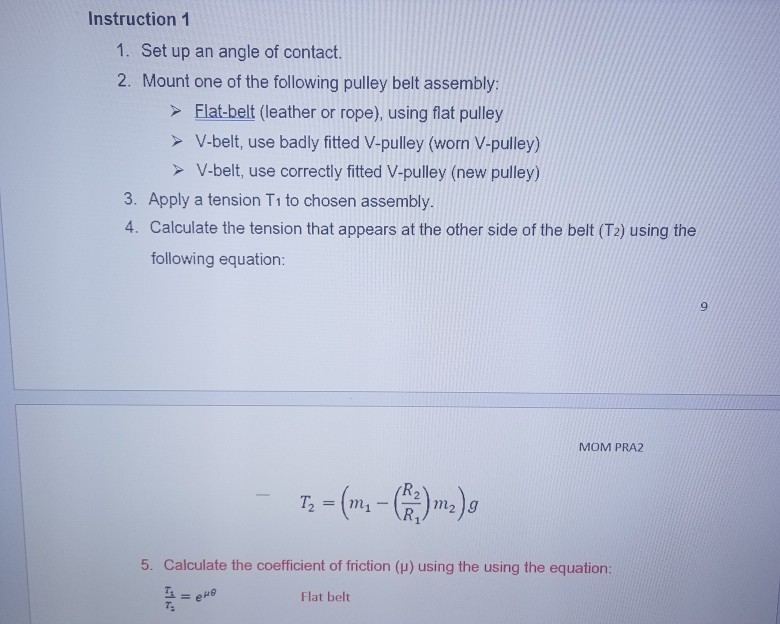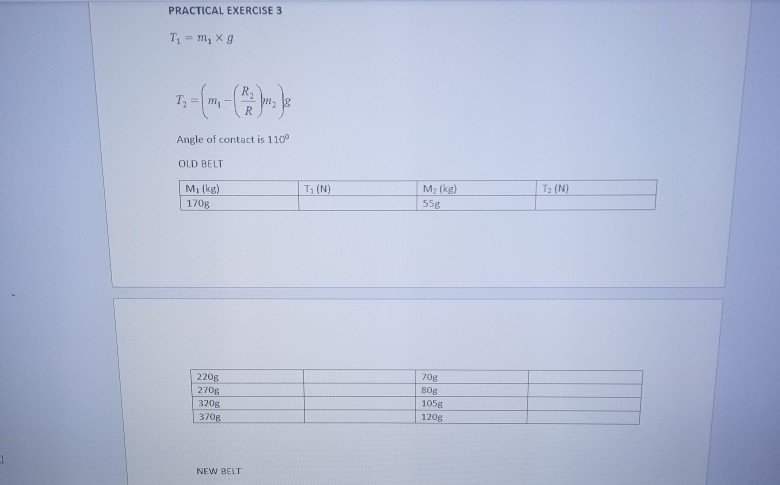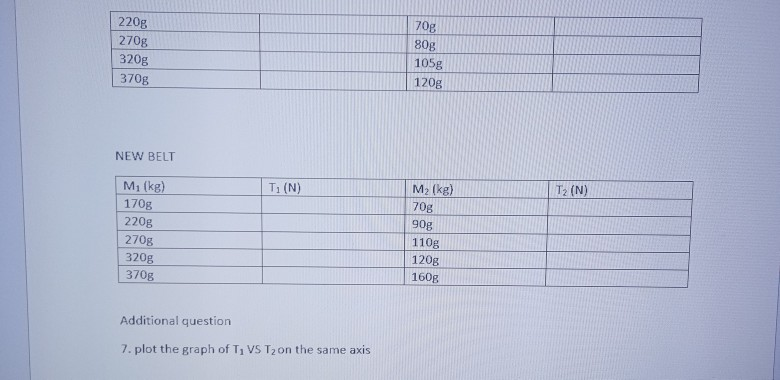Answered step by step
Verified Expert Solution
Question
1 Approved Answer
Practical exercise 3: Comparison of the torque for given angle of lap in different types of belts 1.3.1 Aim 1.1.1 To compare the torque





Practical exercise 3: Comparison of the torque for given angle of lap in different types of belts 1.3.1 Aim 1.1.1 To compare the torque for a given angle of contact using different types of belts. 1.1.2 To determine the friction coefficient (u) of a belt. Instruction 1 1. Set up an angle of contact. 2. Mount one of the following pulley belt assembly: > Flat-belt (leather or rope), using flat pulley > V-belt, use badly fitted V-pulley (worn V-pulley) > V-belt, use correctly fitted V-pulley (new pulley) 3. Apply a tension T1 to chosen assembly. 4. Calculate the tension that appears at the other side of the belt (T2) using the following equation: T = (m - (R) m) 9 MOM PRA2 5. Calculate the coefficient of friction (p) using the using the equation: 1 = eHe Flat belt T 5. Calculate the coefficient of friction (up) using the using the equation: Flat belt 66 HIG = CHO = euecosec (B) V-Belt 6. Repeat the process from 2 on until the required data of all the pulley- belt assemblies are obtained 1 PRACTICAL EXERCISE 3 T = m x g T Angle of contact is 110 OLD BELT M (kg) 170g 220g 270g 320g 370g R NEW BELT T (N) M (kg) 55g 70g 80g 105g 120g T (N) 220g 270g 320g 370g NEW BELT M (kg) 170g 220g 270g 320g 370g T (N) Additional question 7. plot the graph of T VS T on the same axis 70g 80g 105g 120g M (kg) 70g 90g 110g 120g 160g T (N)
Step by Step Solution
★★★★★
3.46 Rating (159 Votes )
There are 3 Steps involved in it
Step: 1
Solutions Here Radius of the pulley are not given so exact value not possibl...
Get Instant Access to Expert-Tailored Solutions
See step-by-step solutions with expert insights and AI powered tools for academic success
Step: 2

Step: 3

Ace Your Homework with AI
Get the answers you need in no time with our AI-driven, step-by-step assistance
Get Started


